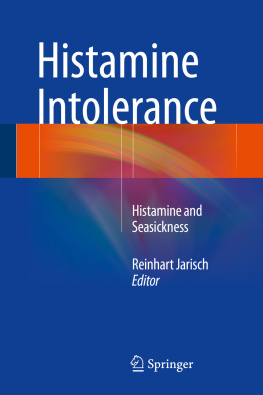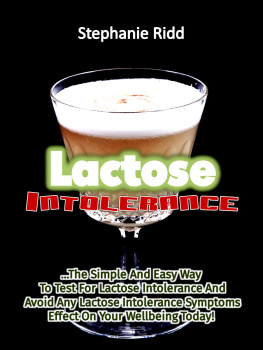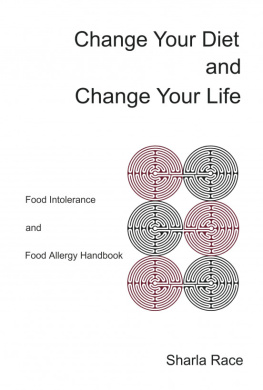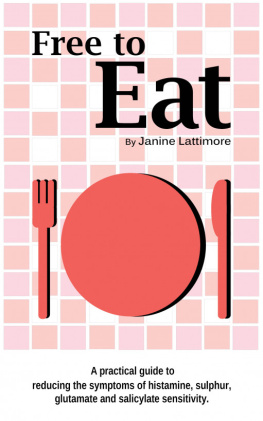1. Introduction
Headache is usually assigned to the cervical spine or the weather. Laborious investigations such as X-rays of the cervical spine, computed tomography, or magnetic resonance tomography are used to determine the cause of the condition. In other words, we still live in a static rather than a dynamic age: pathophysiological changes are simply ignored. Consequently, patients are issued a normal report although they are ill and in turmoil.
A blocked nose is believed to be related to a deformation of the nasal septum, although 40 % of the population have this anatomical variant and many of them have no symptoms. A running nose is assigned to allergy even when allergy tests are negative. This occurs although we are well aware of the fact that some persons experience a blocked nose when they consume wine.
Bronchial asthma may be caused by so-called exogenous factors. In other words, it may be caused by environmental factors such as the house dust mite, pollen, epithelial tissues of animals, and mildew. It may also be caused by endogenous factors (arising from within) also known as intrinsic factors of unknown origin. Many patients have been long aware of the fact that red wine and even Emmental cheese or pizza with tuna fish may cause shortness of breath.
Furthermore, some drugs are inhibitors of diamine oxidase, which is the enzyme that degrades histamine and is specifically used for the treatment of asthma. This approach is used although we are well aware of the fact that histamine provocation is employed to obtain evidence of bronchial asthma and a positive test result helps to diagnose bronchial asthma.
When faced with gastric symptoms, the clinician performs gastroscopy in order to demonstrate the Helicobacter pylori bacterium, although a histamine-free diet would clarify the situation much more rapidly and economically.
Cardiac arrhythmia in young adults gives rise to extensive cardiological investigations, usually with a negative outcome, followed by a statement to the effect that the patient is fine. However, the patient knows this is not the case.
Diarrhea and soft stools are a reason to perform an X-ray investigation of the bowel and laborious examinations of the bowel, many of which can be quite embarrassing and usually yield a negative result. One does not consider the fact that food intolerance might be a part of the problem. Even patients with Crohns disease are simply given drugs, without taking the option of a histamine-free diet into account.
Low blood pressure is a typical symptom of histamine intolerance but is still accepted as the will of God in most cases. Besides, some drug allergies are actually an expression of histamine intolerance. Even patients with neurodermitis may suffer from it and may benefit from a histamine-free diet.
This book does not intend to invent a new type of medicine. Rather, it intends to fill a gap in medicine which has been pervaded by alternative medicine. The latter has been a clinical failure but a financial success in this sector. This book will help to explain medical processes in the style of Hugo Portisch (a very successful Austrian journalist who is able to explain complex matters of foreign policy in a way that any person would understand them) and to demonstrate a simple way of implementing those facts which patients are frequently aware of unconsciously.
2. Histamine and Biogenic Amines
2.1 Histamine
Reinhart Jarisch 3
(3)
Floridsdorf Allergy Center, Franz-Jonas-Platz 8, A-1210 Vienna, Austria
Histamine is a simple chemical substance with a molecular weight of 111 Da. It was discovered in the ergot in 1911. Many great discoveries in medicine are based on coincidences, errors, or sheer carelessness. This is true of histamine as well. Several years later it was discovered that the ergot investigated at the time was contaminated with histamine-producing bacteria and the ergot itself does not contain histamine.
This discovery is important in that it can be immediately extrapolated to foodstuffs. In other words, those types of food that undergo a process of maturation involving bacteria naturally contain high levels of histamine. In order to minimize the production of histamine in red wine while it is undergoing fermentation, one has now started to use cooled vats because bacteria grow faster at high temperatures and more slowly at low temperatures.
Histamine is the principal mediator (inflammatory substance) in allergic diseases such as allergic rhinitis (hay fever) or bronchial asthma. Besides, histamine is the classic triggering substance for urticaria (hives) and plays an important role in drug allergy and drug intolerance.
2.1.1 Physiological (Natural) Effects
The human body produces histamine, which stimulates the secretion of gastric juices. Histamine has a vasodilating and therefore antihypertensive effect and acts as a neurotransmitter in the circadian rhythm and in controlling appetite, learning abilities, memory, emotions, neuroendocrine regulation, and immunomodulation.
Undesirable effects include headache, a blocked or runny nose, respiratory obstruction leading to bronchial asthma, tachycardia (rapid pulse), extrasystole (additional heart beats), even massive cardiac problems, gastrointestinal symptoms that may lead to soft stools or diarrhea, and low blood pressure (hypotension). Swelling below the eyelids is quite common. Urticarial exanthema (nettle rash) may occur occasionally. Histamine is produced by the human organism, is deposited in blood and tissue cells (basophilic granulocytes and mast cells), and is always available for immediate release. Besides, histamine may also enter the body from the outside. This occurs on the one hand through inhalation, such as during histamine provocation for the investigation of bronchial asthma, or orally by the ingestion of food or beverages containing histamine. After intestinal absorption, histamine reaches the bloodstream.
Histamine may also be injected into the skin during a so-called prick or intradermal test. It is known to cause wheals or erythema (reddening of the skin), similar to a mosquito bite.
Intravenous administration of histamine may trigger any of the above-mentioned symptoms. The most dreaded of these are splitting headaches, perceived by patients as a tearing sensation in the head.
While the reactions of histamine on the skin are rather harmless, such as itching or wheals, the entry of histamine into the bloodstream may have fatal effects.
A scientific investigation performed by Sattler and Lorenz () elucidates this phenomenon. The authors investigated two groups of 15 pigs each, who were given a small quantity of alcohol and Emmental cheese through a gastric tube. One group of pigs was given an inhibitor of diamine oxide (a histamine-degrading enzyme, abbreviated to DAO) prior to this step. The group of pigs that received no previous treatment tolerated alcohol and cheese without difficulties. All pigs in whom the histamine-degrading enzyme had been blocked by medication experienced anaphylactic shock after the ingestion of alcohol and Emmental cheese; three pigs died. The experiment was then repeated. The pigs were again given an inhibitor of DAO, but additionally received an antidote in the form of drugs that could block the histamine receptor (H1 and H2 receptor blockers were administered). A small quantity of alcohol and Emmental cheese were then given, and the food containing histamine was tolerated without difficulty. Thus, it becomes obvious that histamine alone is not hazardous. Rather, it is the absence of appropriate degradation mechanisms that is responsible for the symptoms.









